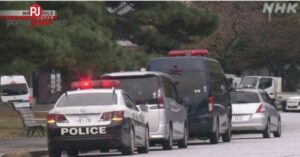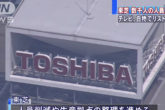Construction of a mammoth 7.7-kilometer tunnel cutting through the Southern Japan Alps will begin Dec. 18 as part of an ambitious project to link Tokyo to Nagoya with a maglev train line by 2027.
Twenty-five kilometers of tunnel are required in total, but the first stretch will be the biggest hurdle facing Central Japan Railway Co. (JR Tokai) in setting up the highly anticipated high-speed Linear Chuo Shinkansen line connecting Shinagawa in Tokyo with Nagoya Station.
A ground-breaking ceremony will be held Dec. 18 in Hayakawa, Yamanashi Prefecture, JR Tokai said Dec. 9.
The deepest part of the tunnel, at 1,400 meters, is expected to pose a number of engineering hazards; groundwater shooting out of fissures at extreme pressure, for example. This will likely be the most troublesome portion of the construction project.
“We will do our very best in building this tunnel, as we have the responsibility of protecting the main artery of the train line in the future,” JR Tokai President Koei Tsuge said in a Dec. 9 news conference.
The operator started work on areas surrounding Shinagawa and Nagoya stations last December, but this will be the first time for construction to begin on the actual train line.
The first tunnel will connect Hayakawa with the border between Yamanashi and Shizuoka prefectures.
After laying out the groundwork, an evacuation tunnel will be dug starting next March to transport earth and rock out from the main tunnel. Construction giant Taisei Corp. and two other companies will be in jointly charge of the project, which is scheduled to be fully under way in autumn 2016 at the earliest with completion expected by Oct. 31, 2025.
The sudden surge of construction vehicles is expected to have a severe impact on the town of Hayakawa for the next 10 years or so with residents having to put up with noise pollution, dust and other negative consequences.
At the peak of the project, the small town with a population of just above 1,100 expects up to 465 trucks to reach the site on any given day.
“We will explain ourselves as much as we can to win the understanding of the residents,” Tsuge said.
Source and image: Asahi
















Join the Conversation